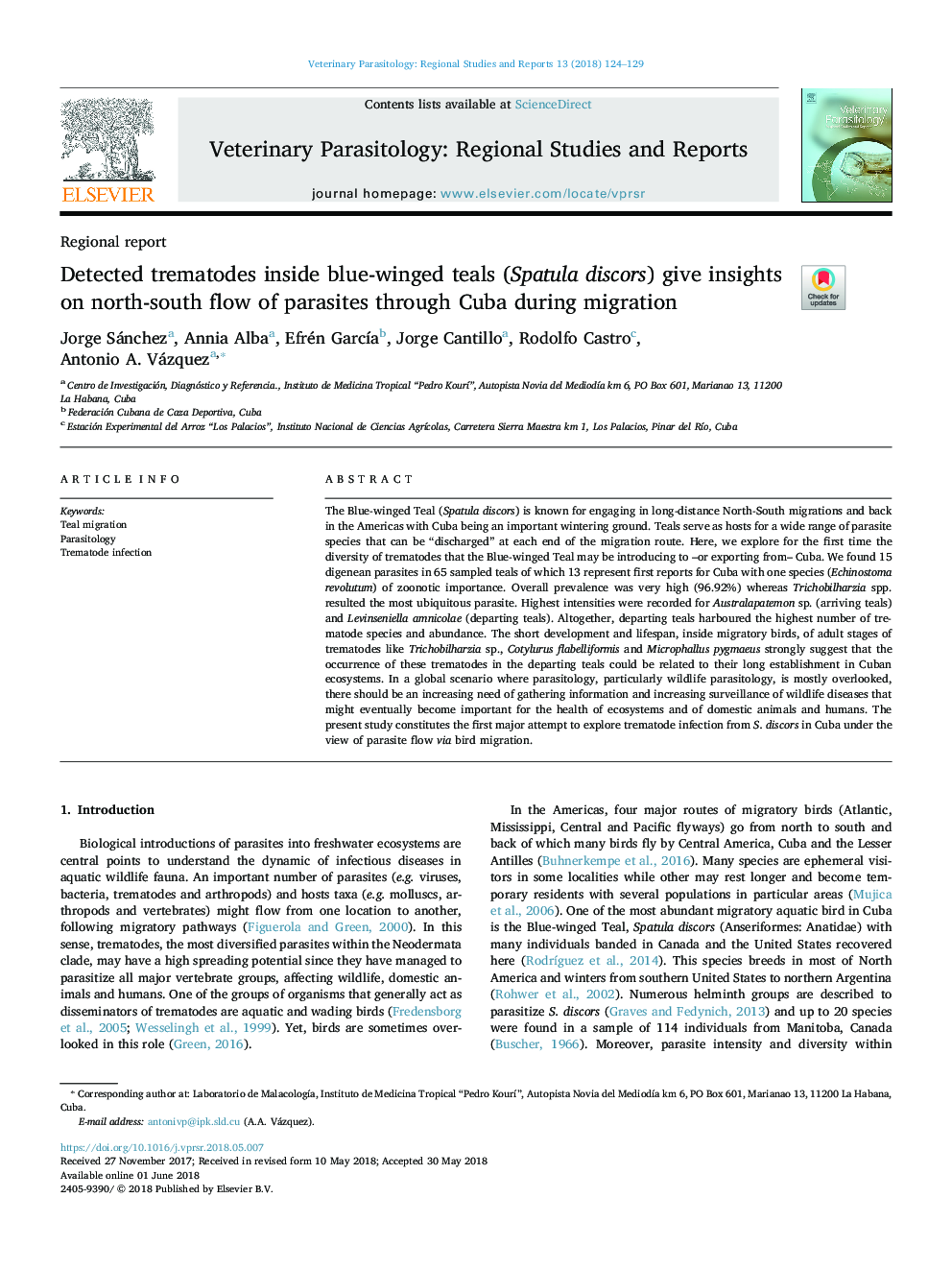| Article ID | Journal | Published Year | Pages | File Type |
|---|---|---|---|---|
| 8506323 | Veterinary Parasitology: Regional Studies and Reports | 2018 | 6 Pages |
Abstract
The Blue-winged Teal (Spatula discors) is known for engaging in long-distance North-South migrations and back in the Americas with Cuba being an important wintering ground. Teals serve as hosts for a wide range of parasite species that can be “discharged” at each end of the migration route. Here, we explore for the first time the diversity of trematodes that the Blue-winged Teal may be introducing to -or exporting from- Cuba. We found 15 digenean parasites in 65 sampled teals of which 13 represent first reports for Cuba with one species (Echinostoma revolutum) of zoonotic importance. Overall prevalence was very high (96.92%) whereas Trichobilharzia spp. resulted the most ubiquitous parasite. Highest intensities were recorded for Australapatemon sp. (arriving teals) and Levinseniella amnicolae (departing teals). Altogether, departing teals harboured the highest number of trematode species and abundance. The short development and lifespan, inside migratory birds, of adult stages of trematodes like Trichobilharzia sp., Cotylurus flabelliformis and Microphallus pygmaeus strongly suggest that the occurrence of these trematodes in the departing teals could be related to their long establishment in Cuban ecosystems. In a global scenario where parasitology, particularly wildlife parasitology, is mostly overlooked, there should be an increasing need of gathering information and increasing surveillance of wildlife diseases that might eventually become important for the health of ecosystems and of domestic animals and humans. The present study constitutes the first major attempt to explore trematode infection from S. discors in Cuba under the view of parasite flow via bird migration.
Keywords
Related Topics
Health Sciences
Veterinary Science and Veterinary Medicine
Veterinary Science
Authors
Jorge Sánchez, Annia Alba, Efrén GarcÃa, Jorge Cantillo, Rodolfo Castro, Antonio A. Vázquez,
